Pointers to adhere to after an Accident
Pointers to adhere to after an Accident
At the very least, accidents are traumatic. So much is happening and there is so much you need to do. The Department of Motor Vehicles (DMV) hopes this pamphlet will help you. Keep this pamphlet in your vehicle just in case you find yourself in an accident. 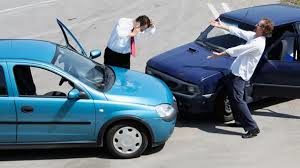
Were You Wearing Seat Belts?
Most drivers, no matter how carefully they drive, will be involved in at least one traffic accident during their lifetime. The chances of being injured or killed are greater than you might think. About one person in three will be injured or killed in a traffic accident. The best thing to increase your chances of surviving is to always use seat belts. Remember, you must wear both your lap and shoulder belt if the vehicle is equipped with both, even if the vehicle is equipped with air bags.
You and any passenger age six or older or who weighs 60 lbs. or more must wear a seat belt while the car is moving. If not, you may be given a traffic ticket. Also, you will be given the ticket if your passenger is younger than 16. A child passenger restraint system is required for any child under the age of six or who weighs under 60 lbs. Either a seat belt or a child passenger restraint system may be used for each person age six or older or who weighs 60 lbs. or more.
Here are some additional tips for using a child safety seat:
The back seat is generally the safest place in the car for children 12 years old or younger.
Babies up to 20 lbs. and about age one should ride in a safety seat secured to the back seat facing the rear of the car. Babies should not be placed facing forward or backward in the front passenger seat if the vehicle has a passenger-side air bag.
Toddlers over 20 lbs. and about age one should ride in an approved safety seat in the back seat.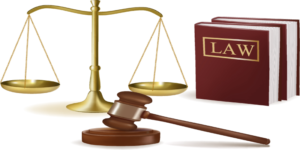
Common Causes of Accidents
Some of the common causes of accidents are:
Unsafe speed
Driving on the wrong side of the road
Improper turns
Violation of the right-of-way rules
Violation of stop signals and signs
Numbered Traffic Lanes
When news stations report accidents, they refer to numbered traffic lanes. The left lane is the “No.1 lane.” The lane to the right of the No.1 lane is the No.2 lane, then the No.3 lane, etc. Here is an example.
If you hear of an accident, try to avoid driving near the accident. Take another route, if you can. If you must drive near an accident scene, do not slow down or stop to look–you may cause another collision. However, drive carefully and watch for people in the road. Always obey any order from a police officer or fire fighter even if you must ignore normal traffic laws or signs.
When You See An Accident
If you are the first person at an accident scene, pull completely off the road, away from the accident. Emergency personnel must be able to see the accident and stop next to it for easy access to injured persons. Check to see if anyone is injured. Also, search the area for victims who may have been thrown from a vehicle. They may be hidden in grass or bushes.
Call 9-1-1. If another person stops to help, ask that person to call 9-1-1. The person calling 9-1-1 must be ready to answer questions and provide information, such as the location of the emergency (cross streets, freeway on/off ramp information) and how many people need help (is anyone bleeding, unconscious, or without a pulse). Don’t hang up! Let the emergency dispatcher hang up first. 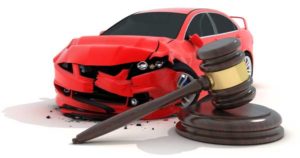
If possible, use flares or emergency triangles. However, if there is a gasoline leak or fumes do not use the flares and don’t smoke!
Help anyone who is not already walking and talking. However, do not move an injured person unless he or she is in a burning vehicle or in other danger. Moving someone incorrectly often makes an injury worse.
Move the vehicle(s) involved out of the traffic lane if it is not disabled. Turn off the ignition of wrecked autos. Again, don’t smoke! Fire is a great danger.
Involved In An Accident?
If you are involved in an accident—STOP. If you don’t stop, you may be convicted of “hit and run” and could be severely punished. Also, someone could be injured and need your help. You must show your driver license, registration card, evidence of financial responsibility, and current address to the other driver or persons involved, or to any peace officer. If your evidence of financial responsibility is insurance, you must provide the company name and address as well as the policy number to avoid a citation and $250 fine.
You or your insurance agent, broker, or legal representative must make the following reports:
If someone is killed or injured, report the accident to the police or CHP within 24 hours of the accident. 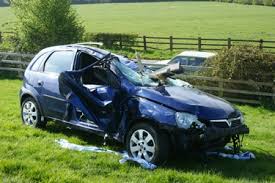
Also, report the accident to the DMV, if there is more than $750 in damage to the property of any person, or anyone is injured (no matter how slightly) or killed. The accident report form (SR 1) is available at DMV or CHP offices. The SR 1 report is required in addition to any other report made to the police, CHP, or your insurance company.
If you hit a parked vehicle or other property, try to find the owner. Identify yourself before you leave. If you can’t find the owner, leave a note with your name and address (and the name and address of the owner of the vehicle you are driving) in the vehicle or securely attached to it. Report the accident without delay to the city police or, in unincorporated areas, to the CHP.
If you kill or injure an animal, pull over to the side of the road and stop. Try to find the owner. If you can’t find the owner, call the nearest humane society or call the police or CHP. Do not try to move an injured animal and never leave an injured animal to die.
How Much Insurance?
You must be financially responsible for your actions whenever you drive and for all motor vehicles you own. If not, you are driving illegally. Most drivers choose to have an automobile liability insurance policy as proof of financial responsibility. If you have an accident not covered by your insurance, your license will be suspended. If the driver is not identified, the owner of the motor vehicle involved will have his or her license suspended.
The minimum amount your insurance must cover is:
$15,000 for a single death or injury.
$30,000 for death or injury to more than one person.
$5,000 for property damage caused by one accident.
DMV Accident Reporting
Each driver or the driver’s insurance agent, broker, or legal representative must make a report to the DMV if someone is killed or injured (no matter how minor the injury) or property damage is over $750. This report is required whether you caused the accident or not and even if the accident occurred on private property. Report the accident within 10 days on the SR 1. You can get this form from any DMV or CHP office. You can also download it from DMV’s web site (www.dmv.ca.gov).
Using the information you give in the accident report, DMV may ask the insurance company to verify that you had coverage in effect at the time of the accident. If you did not have the proper insurance coverage, your driving privilege will be suspended for one year. To get your license back, you will need to provide proof of financial responsibility and maintain it for the next three years.
Every accident reported to DMV by law enforcement will show on your driving record unless the reporting officer says another person was at fault. Every accident reported by you, or another party in the accident, will show on your record if any vehicle involved has over $750 in damage or if anyone is injured or dies. It does not matter who caused the accident. The law says DMV must keep this record.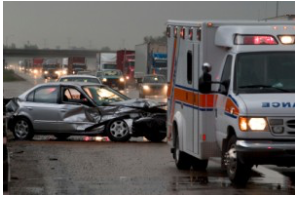
Accident Recap
The following information will help you complete the SR 1 form. (Keep it in your glove box.) Do not use this information to replace the SR 1 form.
Your insurance company name/policy #
Date & Time of Accident
Location of accident
NOTE: You must give your current address and show these documents to any peace officer or person involved in this accident:
Your driver license
Your registration card
Evidence of financial responsibility
Your insurance company name/policy #
You must give your current address
Other driver information:
Driver’s date of birth
Driver’s DL #/State
Driver’s name & address
Driver’s license plate #/State
Driver’s insurance company name
Policy # and expiration date
Policy holder’s name & address
Vehicle owner’s name & address
Injuries or property damage
Contact our Car Accident Accident Lawyers if you have ever experienced a personal injury and think others are at fault for the accident.
Disclaimer: Some of this content is from: https://www.dmv.ca.gov/portal/dmv/detail/pubs/brochures/fast_facts/ ffdl16
